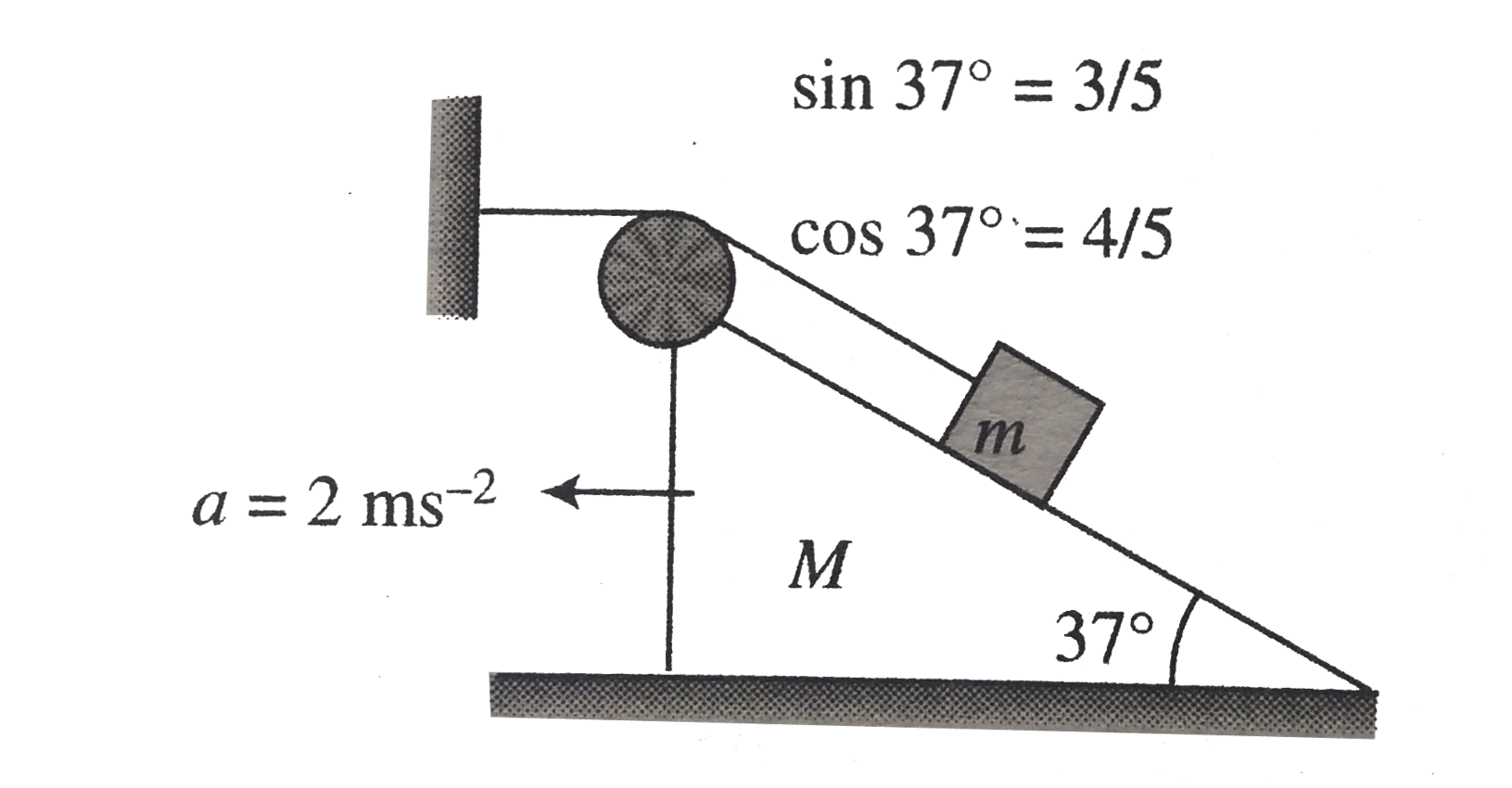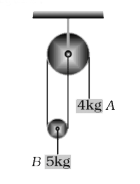For the system as shown in fig. find the acceleration of C. the accelerations of A and B with respect to ground are marked.

Sum of segment lengths should be zero.
(−xA)+(2xB)+xC=0
or xA=2xB+xC
or aA=2aB+aC
5=2×2+aC
⇒aC=1ms−2

Topper's Solved these Questions
- NEWTON'S LAWS OF MOTION 1Book:CENGAGE PHYSICS ENGLISHChapter:NEWTON'S LAWS OF MOTION 1Exercise:Exercise 6.4
Explore 13 Videos
- NEWTON'S LAWS OF MOTION 1Book:CENGAGE PHYSICS ENGLISHChapter:NEWTON'S LAWS OF MOTION 1Exercise:Subjective
Explore 15 Videos
- NEWTON'S LAWS OF MOTION 1Book:CENGAGE PHYSICS ENGLISHChapter:NEWTON'S LAWS OF MOTION 1Exercise:Exercise 6.2
Explore 35 Videos
- MISCELLANEOUS VOLUME 2Book:CENGAGE PHYSICS ENGLISHChapter:MISCELLANEOUS VOLUME 2Exercise:INTEGER_TYPE
Explore 10 Videos
- NEWTON'S LAWS OF MOTION 2Book:CENGAGE PHYSICS ENGLISHChapter:NEWTON'S LAWS OF MOTION 2Exercise:Integer type
Explore 1 Video
Similar Questions
Knowledge Check
In the system shown in the figure, the acceleration of 1 kg mass is
 Ag4downwardsBg2downwardsCg2upwardsDg4upwards
Ag4downwardsBg2downwardsCg2upwardsDg4upwards
In the adjoining figure if acceleration of M with respect to ground is a then

View SolutionFind the relation in the accelerations of the three masses shown in fig.

View SolutionAs shown in fig, if acceleration of M with respect to ground is 2ms−2, then

View SolutionIn the arrangement shown in fig., if the acceleration of B is →a. Then find the acceleration of A.

View SolutionIf block A is moving with an acceleration of 5ms−2, the acceleration of B w.r.t. ground is

View SolutionIn the setup shown, fird acceleration of the block C.

View SolutionA block of mass m=5kg is placed on the wedge of mass M=32kg as shown in the figure. Find the acceleration of wedge with respect to ground. (Neglect any type of friction. Spring and pulley are ideal)

View Solution

